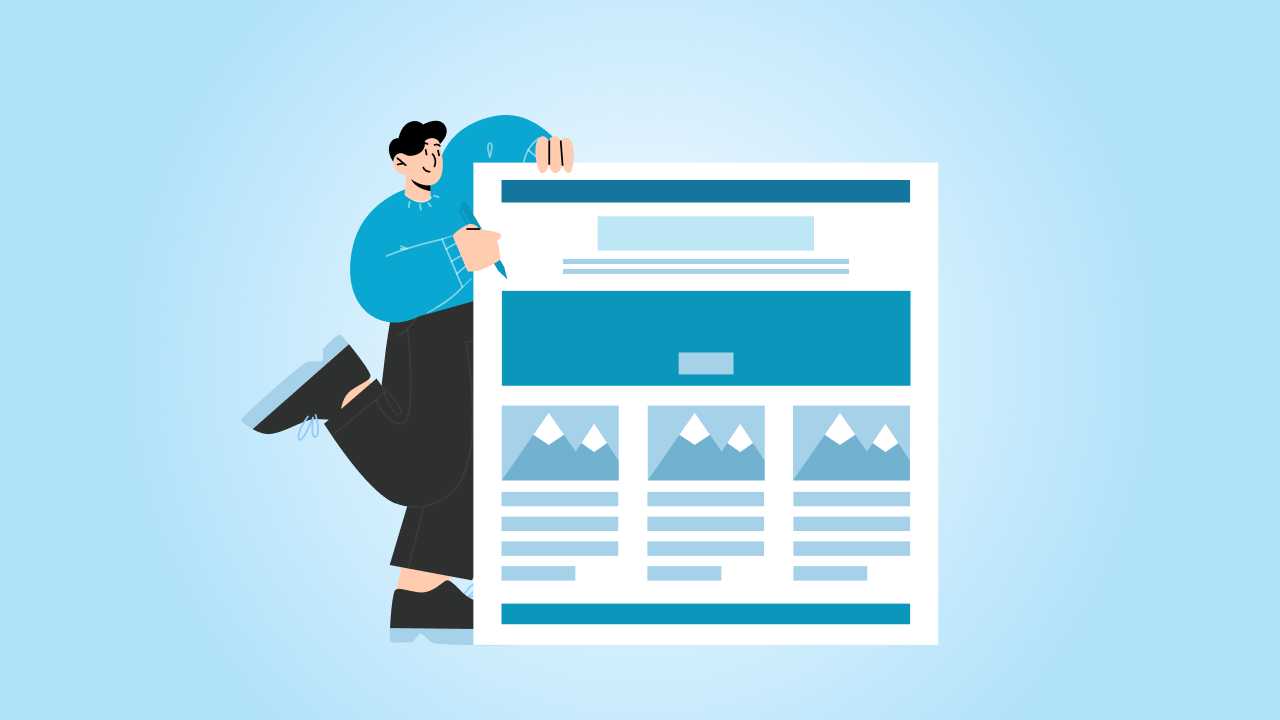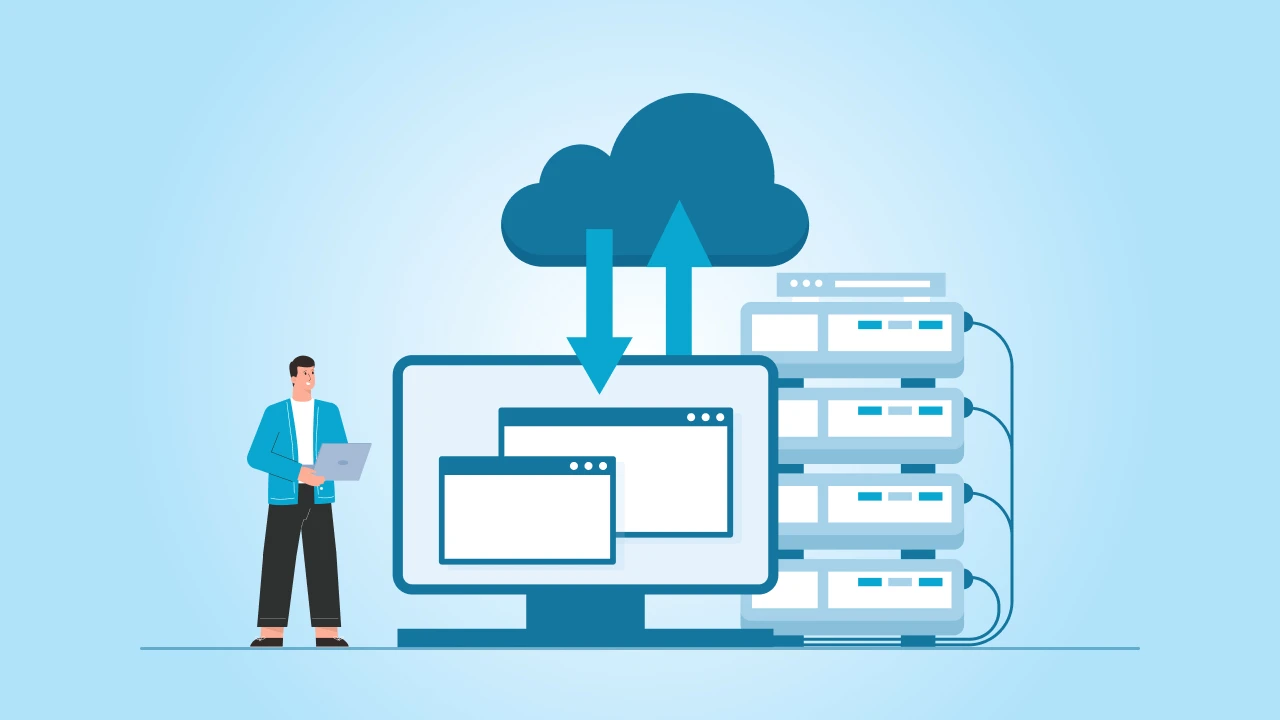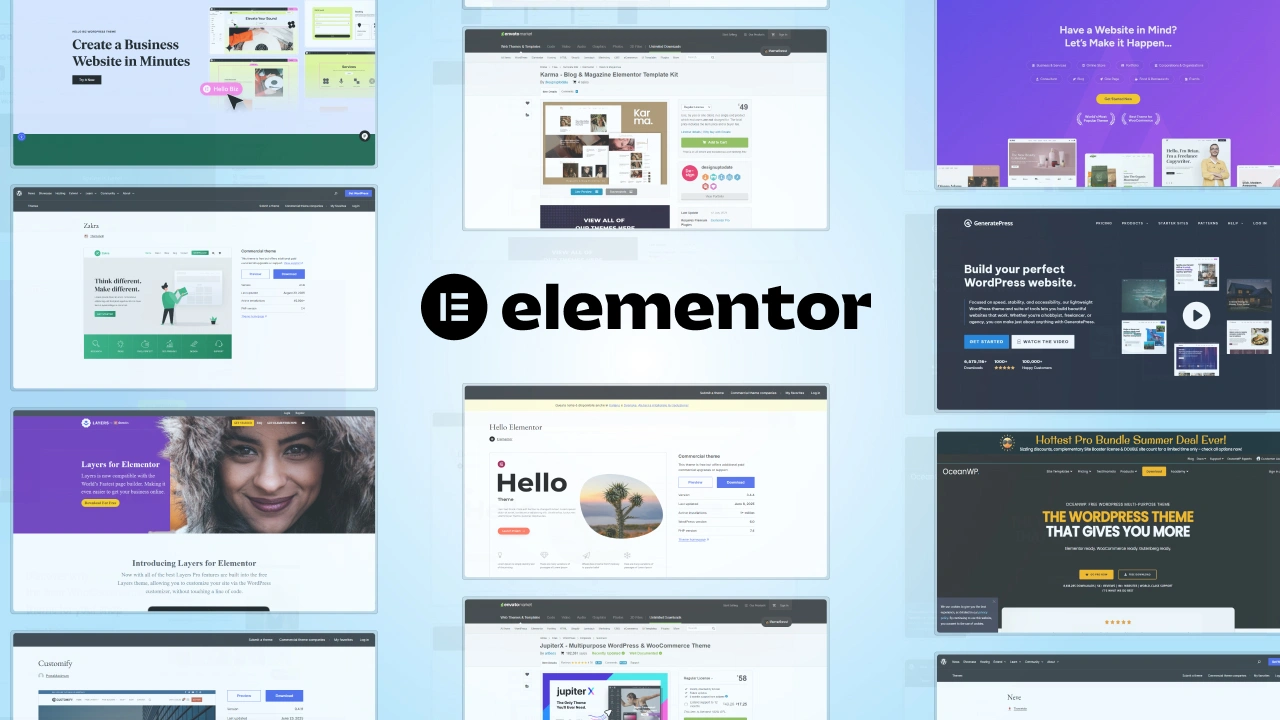Whether switching platforms, redesigning your website, or upgrading your hosting, it’s a process that comes with costs—some obvious, others not so much.
Like it or not, without a clear understanding of what’s involved in website migration, it’s easy to underestimate the budget or run into unexpected expenses.
This guide will break down the costs of website migration step by step. From planning and platform selection to design, content migration, and post-launch support, we will cover everything you need to know to budget effectively and avoid surprises.
Let’s get started!
How Much Does A Website Migration Cost?
Honestly, there is no right answer to this. Because there are too many things that are involved when it comes to website migration costs, and understanding these can help you plan effectively.
Let’s break it down step by step:
1. Define Your Migration Goals
Before diving into the complex website migration process, first try to define your goals.
For instance, what exactly are you trying to achieve? Are you switching to a new platform, redesigning your website for a fresh look, or overhauling your content to better align with your brand?
Because each of these scenarios comes with its own set of costs, and understanding your objectives will help you plan and budget effectively.
A simple platform switch (like migrating from Wix to WordPress or Shopify to WooCommerce) might cost anywhere from $500 to $5,000, depending on the size of your site and the technical work involved.
A full website redesign, including a custom design, new features, and improved functionality, could range from $3,000 to $15,000 (or more for complex eCommerce stores).
A content overhaul, such as rewriting pages, improving SEO, and restructuring your site’s architecture, may add an extra $1,000 to $10,000, depending on the amount of content and level of optimization required.
Hence, in this case, setting clear goals also helps you avoid unnecessary expenses. Without a well-defined plan, it’s easy to get sidetracked by “nice-to-have” or “fancy” features or last-minute changes that can quickly inflate your budget.
By knowing exactly what you want to achieve, you can focus your resources on what truly matters and keep costs under control.
Get tailored migration solutions that fit your budget and business goals.
2. Assess Your Current Website
This step is all about understanding what you are working with—what’s worth keeping, what needs fixing, and what can be left behind.
Don’t even think of skipping this step as this can lead to costly surprises down the road, so it’s worth investing time upfront to assess your site thoroughly.
You can start by conducting a content inventory. This means reviewing every page, blog post, image, and file on your site. Are there outdated pages that can be removed? Do you have duplicate content that needs consolidation?
This process helps you streamline your content, which can reduce migration costs by minimizing the amount of data you need to move.
Next, evaluate your SEO health. Check your current rankings, backlinks, and traffic patterns.
Are there pages performing well that you need to preserve? Are there broken links or missing metadata that could hurt your rankings after the migration? Fixing these issues early can save you from expensive SEO recovery efforts later.
Finally, assess your site’s functionality.
Are there plugins, tools, or custom features that need to be migrated or replaced? Identifying these early ensures you can budget for any necessary updates or replacements.
By auditing your site now, you can spot potential problems before they become costly headaches. Think of it as laying a solid foundation for your migration—it might take some time, but it will save you money and stress in the long run.
3. Choose the Right Platform or Hosting Solution
Once you have defined your goals and assessed your current website, the next step is to choose the best CMS platform and hosting solution. This decision can have a big impact on your migration costs, so it’s important to weigh your options carefully.
Let’s start with platforms. If you are moving to a new platform, the costs can vary significantly depending on what you choose. For example:
- WordPress: The platform itself is free, but expect to spend $50 to $200 on a premium WordPress theme, $100 to $500 on essential plugins, and $500 to $5,000 if you hire a WordPress developer for custom features or design.
- Shopify: Subscription plans start at $39/month for basic plans and go up to $399/month for advanced features. Additional costs may include premium themes ($100 to $350) and apps/extensions ($10 to $50/month each).
- Custom CMS: Fully custom CMS development can be expensive, with upfront costs typically ranging from $5,000 to $50,000+, depending on complexity. Ongoing maintenance can add $500 to $2,000 per month.
Next, consider your hosting options. The type of hosting you choose can also affect your overall costs:
- Shared Hosting: The most budget-friendly option, costing $3 to $15/month. However, it may not be ideal for high-traffic or business-critical sites.
- VPS Hosting: A solid middle ground, offering better performance and security at $20 to $100/month. Best for growing businesses.
- Dedicated Hosting: A premium option for large or high-traffic websites, costing $100 to $500+ per month but offering top-notch performance and security.
- Managed Hosting (for platforms like WordPress or Shopify): Costs can range from $30 to $300+ per month, depending on the provider and features.
Choosing the right platform and hosting solution isn’t just about finding the cheapest option—it’s about finding the best fit for your needs. A well-suited platform and hosting plan can save you money in the long run by reducing the need for costly upgrades or fixes later on.
4. Factor in Design and Development Costs
Now that you are done with hosting and platform, it’s time to think about the look and functionality of your new site. Whether you are giving your site a fresh design or adding custom features, design, and web development costs can vary widely depending on the route you take.
1. Design Costs
- Themes or Templates: Pre-designed themes can be a budget-friendly option, with prices ranging from free to $200 for premium themes (WordPress, Shopify, etc.). If you want something truly unique, a custom website design can cost anywhere from $2,000 to $10,000+, depending on the complexity and level of customization.
- Logo & Branding: If you need a new logo or a complete brand refresh, expect to pay $100 to $1,500 for a freelancer and $2,000 to $10,000+ for a branding agency.
2. Development Costs
- Basic Website (DIY or Template-Based): If you are using a drag-and-drop builder or modifying a template, costs can be as low as $0 to $500, assuming you do most of the work yourself.
- Custom Features: Adding functionality like eCommerce, membership areas, or booking systems typically requires development work.
- Basic add-ons: $100 to $1,000
- Advanced features (e.g., custom checkout, interactive elements): $2,000 to $10,000+
3. Development Options & Their Costs
- DIY Approach: The cheapest option if you have the skills, but it can be time-consuming. Expect to spend $0 to $500, mainly for premium themes, plugins, or tools.
- Hiring Freelancers: A freelancer can cost anywhere from $20 to $150 per hour, depending on their expertise and location. A complete website build by a freelancer may range from $1,000 to $10,000+.
- Working with Agencies: The most expensive but hands-off approach. Web development Agencies typically charge between $5,000 and $50,000+, with ongoing support costing $500 to $5,000 per month.
Note: The key is to balance your budget with your needs. If you are on a tight budget, DIY or freelancers might be the way to go. However, if you are looking for a polished, professional result and have the resources, investing in Website Design Packages from an agency could save you time and headaches in the long run.
5. Content Migration and SEO Considerations
Migrating your content is one of the most critical steps in the website migration process—and it’s also one of the most complex. How you handle this step can have a big impact on both your budget and your site’s performance after the move.
First, let’s talk about content migration costs. There are two main approaches:
- Manual Migration: Copying and pasting content manually is time-consuming and prone to errors. If you handle it yourself, it’s free, but for large sites, hiring someone can cost $25 to $100 per hour, depending on the complexity. If you have hundreds or thousands of pages, expect to pay anywhere from $500 to $5,000+ for manual migration.
- Automated Tools: Migration plugins and third-party tools can speed up the process and reduce errors. These tools can range from $50 to $500+, depending on the features and platform. Some platforms offer free migration tools, but for custom or complex migrations, premium solutions or expert setup may be required, adding another $200 to $1,500 to the budget.
But content migration isn’t just about moving text and images—it’s also about preserving your SEO rankings. If done incorrectly, a website migration can tank your search engine rankings, leading to a drop in traffic and revenue. To avoid this, you will need to factor in additional costs for:
- 301 Redirects: If your URL structure changes, proper 301 redirects are crucial to prevent broken links and loss of search rankings. Setting up redirects manually can be free if you do it yourself, but for large websites or expert handling, it may cost $300 to $3,000 (depending on the number of pages).
- SEO Audits: Conducting SEO audits before and after migration helps identify and fix issues like broken links, missing metadata, and duplicate content. A basic SEO audit may cost $200 to $1,000, while a comprehensive audit (including technical and content analysis) can be $1,000 to $5,000+.
- Content Updates & Optimization: A migration is a great time to refresh and optimize your content for better search rankings. Hiring an SEO writer or agency to rewrite and optimize pages can range from $50 to $500 per page, depending on the depth of optimization needed. Full content refreshes for large websites can cost $2,000 to $20,000+.
By investing in a thorough content migration and SEO strategy, you can protect your rankings and ensure a smooth transition to your new site. It might cost more upfront, but it’s far cheaper than trying to recover lost traffic later.
6. Testing and Quality Assurance
As soon as your new site is built and your content is migrated, it might be tempting to hit the launch button right away. But hold on—this is where testing and quality assurance (QA) come in.
Skipping this step can lead to a host of problems, from broken links and slow load times to compatibility issues that frustrate users and hurt your brand.
Testing your site thoroughly before going live is an investment, but it can save you from costly fixes later. Here’s what you need to consider:
A) Functionality Testing Costs
Ensuring all features—like forms, buttons, menus, and checkout processes—work correctly is essential.
- Basic testing (DIY with free tools like Google Search Console & Chrome DevTools): $0
- Freelancer or in-house tester: $25 to $100 per hour (depending on experience)
- Full QA testing by an agency: $1,000 to $5,000+, depending on the complexity of the site
B) Performance Testing Costs
Slow load times can hurt user experience and SEO rankings. Testing and optimization are key.
- DIY testing with free tools (Google PageSpeed Insights, GTmetrix, Lighthouse): $0
- Hiring a developer to optimize site speed: $500 to $5,000+, depending on site complexity
- CDN (Content Delivery Network) services like Cloudflare or AWS CloudFront: $10 to $200/month
- Premium performance testing tools (e.g., LoadNinja, Pingdom): $50 to $500 per year
C) Compatibility Testing Costs
Ensuring your site functions seamlessly across devices and browsers is essential.
- Manual cross-browser/device testing (DIY using free tools like BrowserStack’s free version): $0
- BrowserStack or Sauce Labs (paid versions for automated cross-browser testing): $30 to $200/month
- Freelance tester or agency for full compatibility testing: $500 to $5,000+, depending on site size
D) User Testing Costs
Getting real users to navigate your site can reveal usability problems that internal testing may miss.
- Basic DIY user testing (family/friends/internal team feedback): $0
- User testing platforms like UsabilityHub or UserTesting.com: $50 to $500+ per test
- Professional usability study (conducted by UX agencies): $1,000 to $10,000+
The risks of skipping QA are significant. A site with broken features, slow performance, or compatibility issues can damage your reputation, drive away customers, and even hurt your search engine rankings. Fixing these problems after launch is often more expensive and time-consuming than addressing them during the testing phase.
In short, testing and QA might add to your upfront costs, but they are essential for avoiding bigger expenses—and headaches—down the line. Think of it as an insurance policy for your website migration.
7. Post-Migration Support and Maintenance
Your website migration isn’t over once the new site goes live. In fact, that’s just the beginning. To keep your site running smoothly and securely, you will need to budget for ongoing support and maintenance. Ignoring this step can lead to performance issues, security vulnerabilities, and even costly downtime.
Here’s what you need to plan for:
A) Regular Updates
Keeping your platform, plugins, and themes updated is important for security and performance. Many businesses opt for monthly maintenance plans to handle these updates.
- DIY (manual updates): $0, but requires technical knowledge and time
- Basic maintenance plan (for small websites): $50 to $150 per month
- Comprehensive maintenance plan (for larger or eCommerce sites): $200 to $1,000+ per month
B) Security Measures
Protecting your site from threats like malware, hacking attempts, and data breaches is a must.
- SSL certificate (essential for security and SEO): $0 to $200/year (some hosts offer free SSL)
- Security plugins (like Wordfence, Sucuri, or iThemes Security): $50 to $300/year
- Professional security monitoring & firewall services: $100 to $500+ per year
- Hiring a security expert for audits & hardening: $500 to $5,000+ (one-time or ongoing)
C) Technical Support
Even after a smooth migration, issues can pop up.
- Hosting provider support (included in some plans): $0
- Freelance developer (for troubleshooting issues): $50 to $150 per hour
- Agency support retainer (for ongoing support & bug fixes): $500 to $5,000 per month
D) Backups
Regular backups ensure you can restore your site quickly if something goes wrong.
- Hosting provider backups (basic plans may include daily/weekly backups): $0 to $50/month
- Premium backup solutions (like Jetpack Backup, VaultPress, or CodeGuard): $5 to $30/month
- Offsite backup services (Amazon S3, Dropbox, or Google Drive storage): $10 to $100+ per month
E) Performance Monitoring
Monitoring your site’s speed, uptime, and overall performance helps prevent slowdowns and downtime.
- Free tools (Google Analytics, Google Search Console, UptimeRobot basic plan): $0
- Premium monitoring tools (New Relic, Pingdom, UptimeRobot Pro): $10 to $200+ per month
- Hiring a developer to optimize performance based on monitoring insights: $500 to $5,000+
Total Estimated Costs for Post-Migration Support
- Small personal or business websites: $50 to $300 per month
- Mid-sized business or eCommerce sites: $300 to $1,500 per month
- Enterprise-level or highly customized websites: $2,000 to $10,000+ per month
Investing in post-migration support helps protect your website’s performance, security, and long-term success. While these costs may seem like an added expense, they are far cheaper than dealing with a hacked or broken site after launch.
8. Hidden Costs to Watch Out For
Sometimes, even with careful planning, website migrations can come with unexpected expenses that catch you off guard. These hidden costs can quickly add up, blowing your budget if you are not prepared. Here are some common ones to watch out for—and tips to avoid or minimize them:
A) Plugin or App Licenses
Many websites rely on premium plugins, apps, or tools for added functionality. Some require annual or monthly subscription fees, which can be a recurring cost.
- Premium plugins (SEO, security, performance, etc.): $50 to $500 per year per plugin
- eCommerce or membership plugins: $100 to $1,000 per year
- Tip: Audit your current plugins and migrate only the essential ones. Look for free or lower-cost alternatives.
B) Third-Party Integrations
If your website integrates with payment gateways, CRMs, email marketing platforms, or analytics tools, there might be costs for reconfiguring or reconnecting these services.
- Reintegration of third-party services: $100 to $2,000 (depending on complexity)
- API reconfiguration or custom connections: $500 to $5,000+
- Tip: Contact service providers early to understand fees and
requirements.
C) Custom Development Costs
Even if you are using a pre-built theme or template, you might need custom coding for unique features, which can be expensive.
- Minor customizations (CSS tweaks, small layout changes): $100 to $500
- Moderate custom coding (custom forms, interactive elements): $500 to $5,000
- Full-scale custom development: $5,000 to $50,000+
- Tip: Clearly define must-have features upfront to avoid “scope creep” (extra features that increase costs).
D) Staff Training Costs
A new platform or design may require your team to learn new tools and workflows. Training expenses can add up if you need professional instruction.
- Basic in-house training: $0 to $500 (if done internally)
- Online courses (Udemy, LinkedIn Learning, etc.): $50 to $500 per person
- Professional training or workshops: $1,000 to $5,000
- Tip: Choose a platform with an intuitive interface and use free resources to train your team.
E) Content Cleanup & Optimization
A migration is the perfect time to remove outdated content, rewrite copy, or improve SEO, but this process can be time-consuming.
- DIY content audit & cleanup: $0 (time investment only)
- Hiring an SEO/content specialist: $500 to $5,000+ (for full content review & optimization)
- Tip: Prioritize high-value pages first to control costs.
F) Domain & SSL Renewal Fees
If you are changing your domain or need an SSL certificate, these costs can sneak up on you.
- Domain renewal: $10 to $50 per year
- New domain purchase: $10 to $500+ (premium domains can be thousands)
- SSL certificate: $0 (Let’s Encrypt) to $200+ per year
- Tip: Check expiration dates and budget for renewals.
G) Post-Launch Fixes & Maintenance
Even with thorough testing, unexpected issues can arise after launch, leading to bug fixes, performance optimizations, or last-minute design tweaks.
- Minor fixes & tweaks: $100 to $1,000
- Major fixes or redesign changes: $2,000 to $10,000+
- Tip: Set aside a contingency budget of 10-15% of your total migration cost to cover unexpected post-launch expenses.
While it’s impossible to predict every expense, being aware of these hidden costs can help you plan a more accurate budget. A well-prepared migration strategy ensures you avoid surprises, control costs, and make the transition as smooth as possible.
Conclusion
Migrating a website isn’t just about moving from one place to another—it’s about setting your business up for better performance, security, and growth. Yes, of course, costs can vary, but understanding where your money goes can help you make smarter decisions.
Think of it like moving to a new house. Although you could do it yourself, hiring website migration experts can save you time, stress, and unexpected issues. Cutting corners might seem like a huge cost-saver at first, but it can lead to bigger headaches down the road—like losing valuable traffic or breaking important site features.
The key is to plan. Know what your site needs, research your options, and invest wisely. A smooth migration isn’t just about the price—it’s about making sure your website is stronger, faster, and ready to grow.
At cmsMinds, we specialize in seamless website migrations that ensure minimal downtime, preserved SEO rankings, and a smooth transition.





